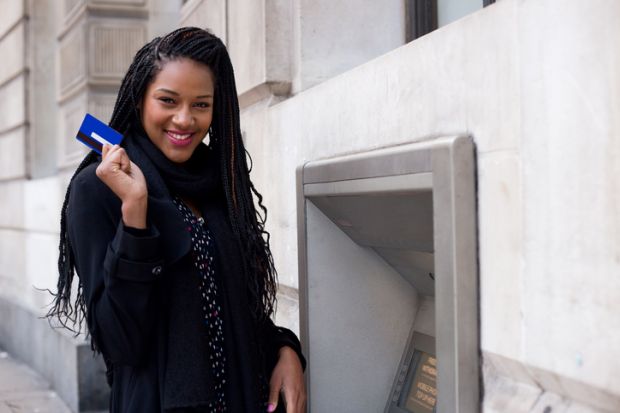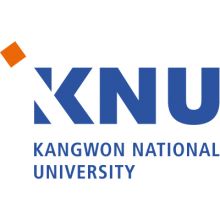
One of the biggest things that you will need to manage when you go to university in the US is your finances. Having a safe place to keep your money is one weight off your mind. There are many banks across the US, as well as different types of accounts.
Whether you are an international or a domestic student in the US, it is worth checking out what bank accounts there are available for students.
1. Choose a bank
There are many banks in the US, so the best way to narrow it down is to look at what the different banks are offering students (see our handy table, below). Many bank accounts will have a monthly fee or service charges, but some waive those fees for students.
The other thing that is always worth looking at is which ATMs (cash machines) are available on your university campus. If you use a different bank’s ATM to withdraw money from the bank you hold your account with, there is a possibility you will be charged for your withdrawal. It is likely that the bank that has ATMs on your campus may have some kind of affiliation with your university.
It is advisable to open your bank account with a national bank such as Bank of America or Chase, rather than a state-specific bank, so that you can use ATMs located across the country if you are an international or an out-of-state student. However, if you are staying in-state to go to university then it may be worth sticking with your local bank, particularly if you already have an account with them.
Some banks will also charge for paper statements, so make sure you are aware of this cost when applying for your account.
Studying in the United States
The cost of studying at a university in the United States
Scholarships available in the US for international students
In-state vs out-of-state US colleges
Nine things every student should know about studying in the United States
Best universities in the United States
2. Choose an account
There are two different types of bank accounts in the US: a checking account and a savings account.
Checking account: a checking account allows you to deposit and withdraw money as often as you like. Usually when you open a checking account you receive a chequebook and a debit card. Most international students will only need to open a checking account to pay for their living costs while studying in the US.
Savings accounts: a savings account is a place to collect money over a longer term. Some students may consider opening one of these, if they are working or want to save money for travel or emergencies.
Most banks have specific checking accounts for students, such as the Chase College Checking Account and the Santander Student Value Checking Account.
3. Breakdown of bank accounts
There are hundreds of banks across the US, so it is worth doing some of your own research into the most suitable bank account for you. Here at THE Student, I've had a look around some of the major banks to see what they are offering students.
| Bank | Account name | Monthly fee | Extras |
| Chase | Chase College Checking Account | $6 a month, but this is waived for up to five years of college enrolment | A $100 sign-up bonus (dependent on criteria), mobile banking app, online budgeting tool, quick online money transfer, $50 refer a friend scheme, student credit card (optional) |
| Bank of America | Bank of America Core Checking Account | $0 for students under 24 years old | Mobile banking app, thousands of ATMs across the country, rounds up money into savings, no overdraft fees |
| Wells Fargo | Student Checking Account | $0 if aged between 17-24 years old | Mobile banking and easy money transfers, thousands of ATMs, 24/7 fraud monitoring, Campus Card programme |
| HSBC USA | International Student Account OR Student Checking Account | $0 for six years |
Can connect to a HSBC account in your home country, mobile banking, $100 welcome deposit if new to HSBC (dependent on criteria) |
| U.S. Bank | Student Checking Account | $0 | Four non-U.S. Bank ATM transactions per statement period, free personal checks, mobile banking, campus banking |
| TD Bank | TD Student Checking | $0 if aged between 17-23 years old | Mobile banking, thousands of ATMs across the country, $50 bonus (dependent on criteria), digital wallet |
| Capital One | 360 Checking Account | $0 | Mobile banking, online bill pay, overdraft options, access to 40+ currencies and bank details to use as a local in certain countries |
| Santander | Student Value Checking | $0 for students aged between 14-15 years old, fee waived with one transaction per month | Mobile banking, discounts on Santander savings accounts, no minimum balance, transfer money internationally |
There are also banks that are state specific, such as the Bank of California, so it is always worth researching what your university state has on offer. There are also a number of online-only banks that offer great student bank accounts such as Ally, Simple and Chime.
4. How to open a bank account
Although it is possible to open a bank account over the phone or online, if you are an international student it might be easier to open your account in person in case there are any complications. When you go to the bank to open your account you will need:
- Your full name, home address, home telephone number, your campus telephone number and your college address
- Your passport
- An I-20 (certificate of eligibility for non-immigrant student status) or I-797 approval notice
- Any secondary form of identification (such as your student ID card, birth certificate, driver’s license, or a letter from the international students and scholars office at your university)
- A letter of acceptance from your university
- An amount of money to deposit into the account (this will vary between banks)
These requirements may be slightly different across banks, so make sure you check what your bank requires before heading over.
















